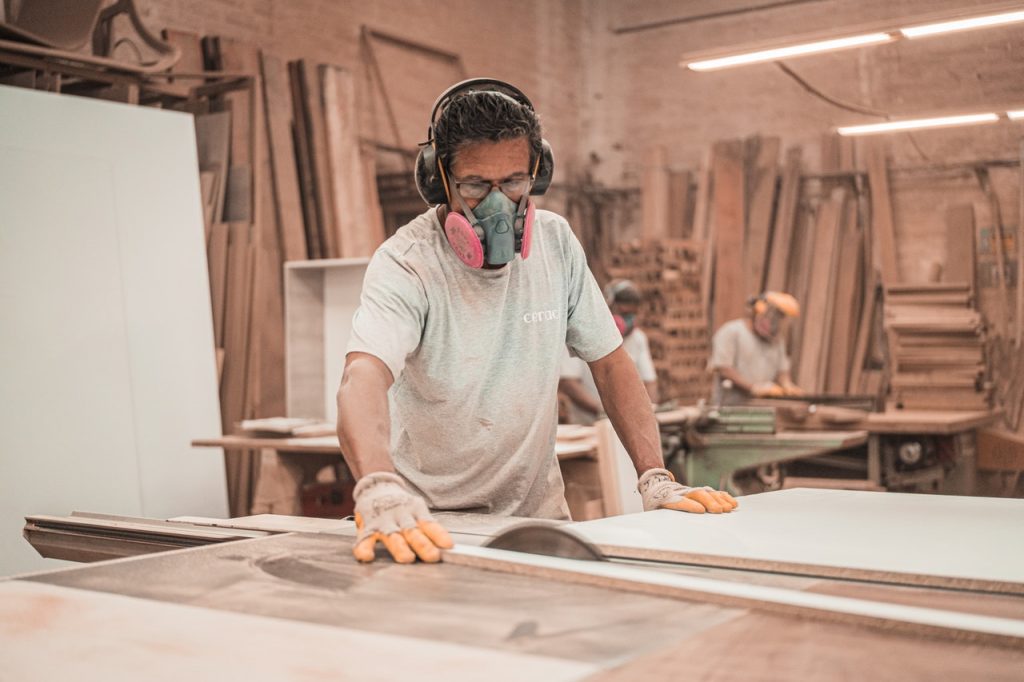Cuts prevention is a crucial topic about which every worker should be knowledgeable. Cuts and lacerations are the most commonly reported workplace injury, says Site Safe, so what precautions can you encourage your employees to take to prevent injuries?

Avoid potential hazards
There are many factors that can contribute to an injury beyond improper use of tools. Everything from the workplace environment to a worker’s overall physical state may play a role. Here are potential issues that can lead to work injuries:
- Fatigue
- Cluttered workspaces
- Poor training
- Limited visibility
- Outside distractions
- Paying little or no attention during instructions
- Rushing through tasks
- Dangerous surface conditions
It’s imperative that your employees take extra care when using possibly hazardous tools in the workplace. Make sure they’re properly and thoroughly trained for the task at hand.
Use the appropriate tools for preventing cuts
Having the appropriate tools at one’s disposal can play a vital part in preventing cuts in the workplace.
WorkSafe suggests:
- Ensuring that equipment with blades is securely fixed to the bench
- Using bull nose knives rather than pointed-end knives where possible
- Providing a magnetic strip for knife storage
- Providing knives with handles that are appropriate to the job and comfortable to use
Again, it is important to train all workers in the safe use of these tools.
Wear safety gloves
Safety gloves may be the most crucial piece of PPE (personal protective equipment) one can have in the workplace. Cut-resistant gloves are designed for preventing cuts and lacerations. There are certain levels that indicate how much a pair of cut-resistant gloves can withstand by “grams of cutting load.” Meaning, how many grams of cutting can the gloves handle prior to blade penetration.
In the U.S., the American National Standards Institute (ANSI) provides ratings for cut-resistant gloves. Meanwhile, in Europe, the European Commission sets cut-resistant glove ratings. Here’s what ANSI and the International Safety Equipment Association (ISEA) have listed for their 9-tier rating system:
· A1: 200 – 499 grams
· A2: 500 – 999 grams
· A3: 1000 – 1499 grams
· A4: 1500 – 2199 grams
· A5: 2200 – 2999 grams
· A6: 3000 – 3999 grams
· A7: 4000 – 4999 grams
· A8: 5000 – 5999 grams
· A9: 6000+ grams
When looking at glove specifications, the ANSI cut level rating will appear inside a badge that resembles a shield.
The European standard of cut-resistant glove rating is called “EN 388.” There are six levels of rating as opposed to nine for its American counterpart.
· A: 2 – 4.9 newtons (204 – 508 grams)
· B: 5 – 9.9 newtons (509 – 1019 grams)
· C: 10 – 14.9 newtons (1020 – 1529 grams)
· D: 15 – 21.9 newtons (1530 – 2242 grams)
· E: 22 – 29.9 newtons (2243 – 3058 grams)
· F: 30+ newtons (3059+ grams)
Of course, your workers should use a higher rating for cut-resistant gloves if they’re handling sharper blades and if the job at hand is a hazardous one. A5 or higher (ANSI) and E to F (EN 388) should do the trick for riskier tasks such as construction, rigging, rescue work, mining, iron work or anything that puts one at high risk for cuts/lacerations.
Be aware of surroundings
Personal awareness can go a long way towards preventing workplace injuries. Cluttered walkways can pose a hazard, as well as slippery, dirty, or sticky floors. In addition, jutting equipment that’s not safely stored can lead to tripping which, in turn, could result in cuts and lacerations.
It’s easy to fall prey to distractions as well. Especially if there are several people at work in the same area. Loud noises can also lead to injuries if one is distracted by them. Thus, it’s important that your employees remain as focused as possible. Maintaining physical health and getting adequate sleep can be helpful in that regard.
Attend safety meetings
You can’t force someone to pay attention to you, but you can host regular safety meetings to drive home the importance of avoiding cuts and lacerations in the workplace. Instill confidence in your employees, especially the newer ones who may not feel confident in learning a new trade. Show them a few stretches or simple exercises to do before every shift. Loosening up the body will prevent cramping or pulled muscles.
You can also address how imperative self-care is. Staying hydrated, maintaining a regular sleep schedule, and eating healthy foods can make the difference between an employee that fires on all cylinders and an employee who falls victim to injury. A healthy worker is also a more productive worker.
Preventing injuries is something that should be kept in mind every second of every work shift. Putting cuts prevention into practice means less turmoil and a more productive atmosphere.




